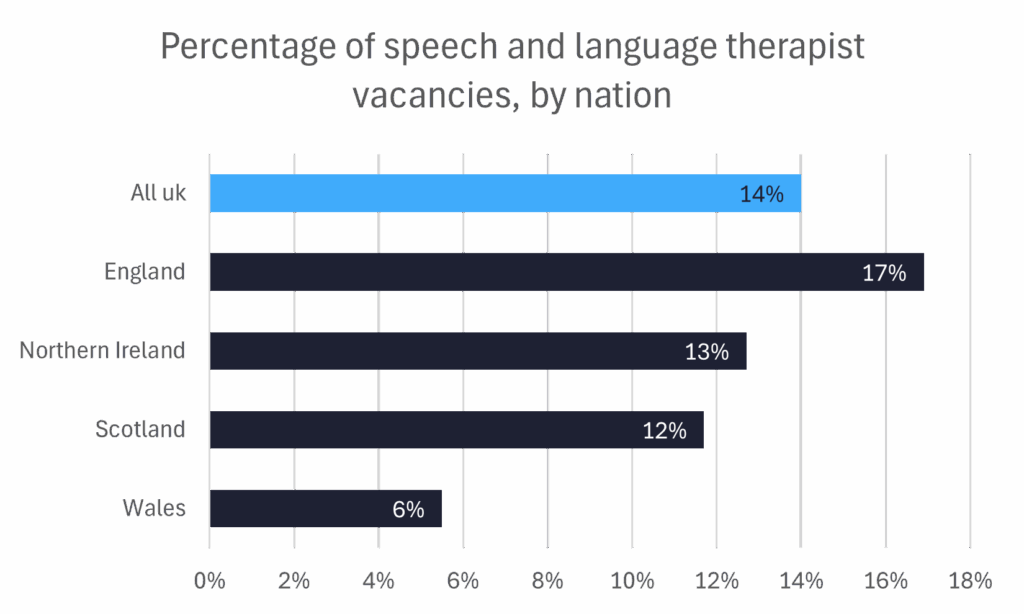Find out the results from our vacancy and recruitment survey, which identifies trends and issues with recruitment in the speech and language therapy profession.
RCSLT’s latest annual workforce and vacancy survey was conducted in spring 2025. There were 215 responses to the survey, 135 of which included workforce data about at least one speech and language therapy service.
The survey shows a slight improvement in vacancy rates among respondents. However, workforce shortages remain a significant challenge, with not enough practitioners available to fill the roles necessary to meet demand and reduce waiting lists. Notably, vacancy rates have increased within independent speech and language therapy services, highlighting concerns across the entire sector.
Survey respondents from across the UK reported:
- 14% of speech and language therapist (SLT) posts were vacant (for both the NHS and independent sectors). This is a little lower than the 17% vacancy rate reported in last year’s survey.
- 13% of SLT posts in the NHS were vacant. Again, this is slightly lower than the 16% vacancy rate reported in last year’s survey.
- 10% of SLT posts in NHS children’s services were vacant.
- 14% of SLT posts in NHS adult services were vacant.
- 24% of posts for SLTs in the NHS supporting people with learning disabilities were vacant.
- 44 respondents were from the independent sector, where the vacancy rate was higher (23%) than in the NHS (13%) and higher than the 20% vacancy rate reported in last year’s survey.
Note: NHS posts include SLTs from Health and Social Care (HSC) Northern Ireland
According to survey respondents, there is variation in vacancy rates across the UK:
- 17% of SLT posts in England were vacant (for both the NHS and independent sectors).
- 21% of London’s SLT posts were vacant.
- 12% of SLT posts in Scotland were vacant (for both the NHS and independent sectors).
- 13% of SLT posts in Northern Ireland were vacant (this calculation was predominantly based on Health and Social Care services).
- 6% of NHS SLT posts in Wales were vacant (no responses were received from independent speech and language therapy services).

Figure 1: 2025 vacancy rate by nation, RCSLT 2025 Workforce and Vacancy Survey.
Please note the following statistics reported in previous years were not reportable due to low numbers of respondents:
- Vacancy rates by nation for specific service user groups.
- Percentage of independent speech and language therapy services declining NHS contracts due to recruitment difficulties.
- Percentage of services experiencing recruitment challenges by pay band.
